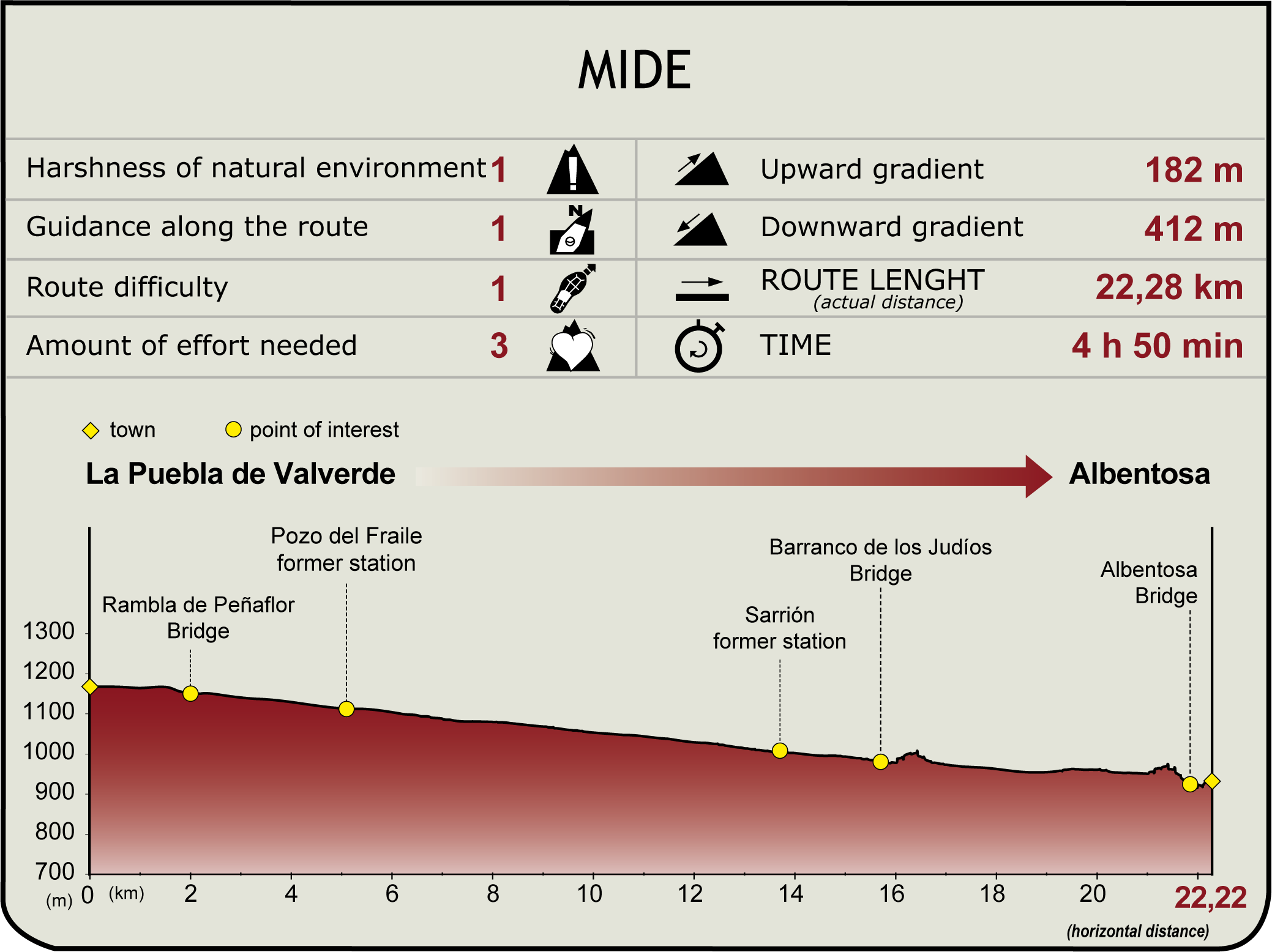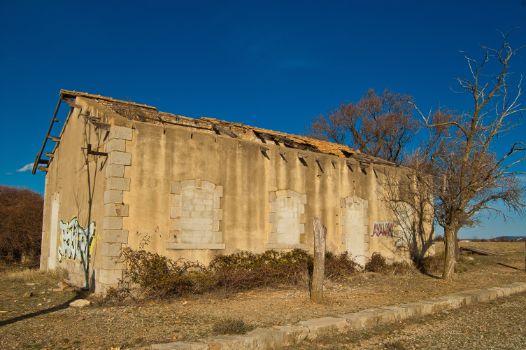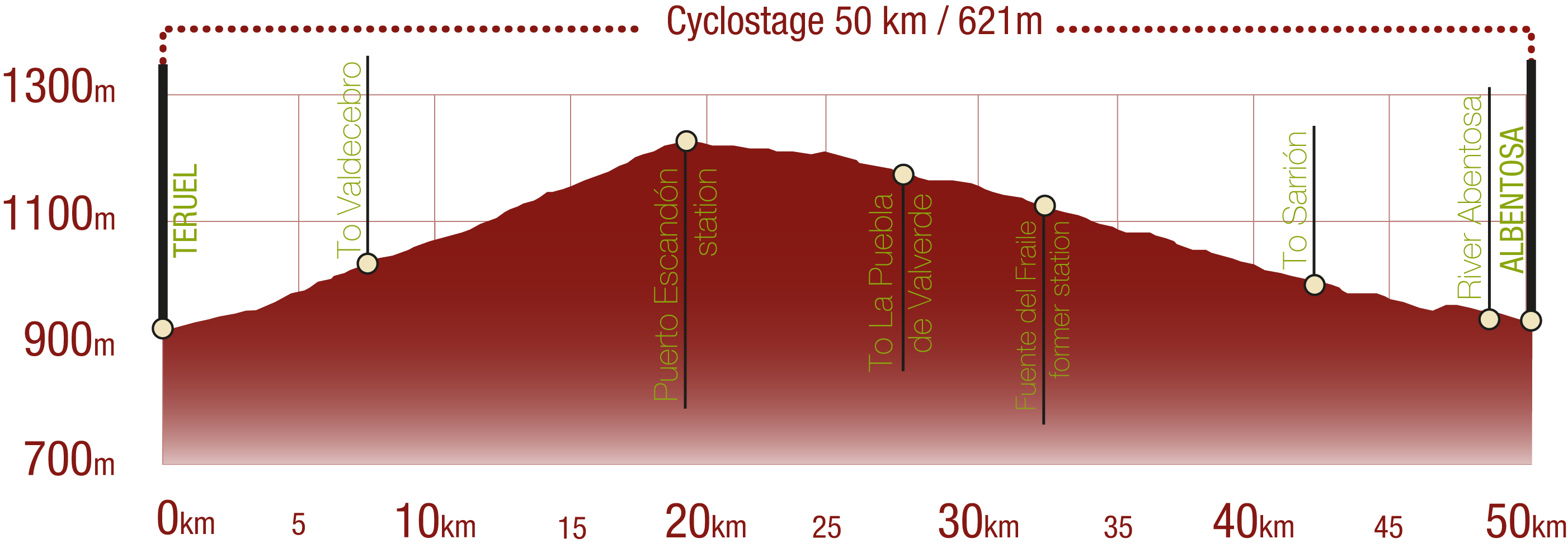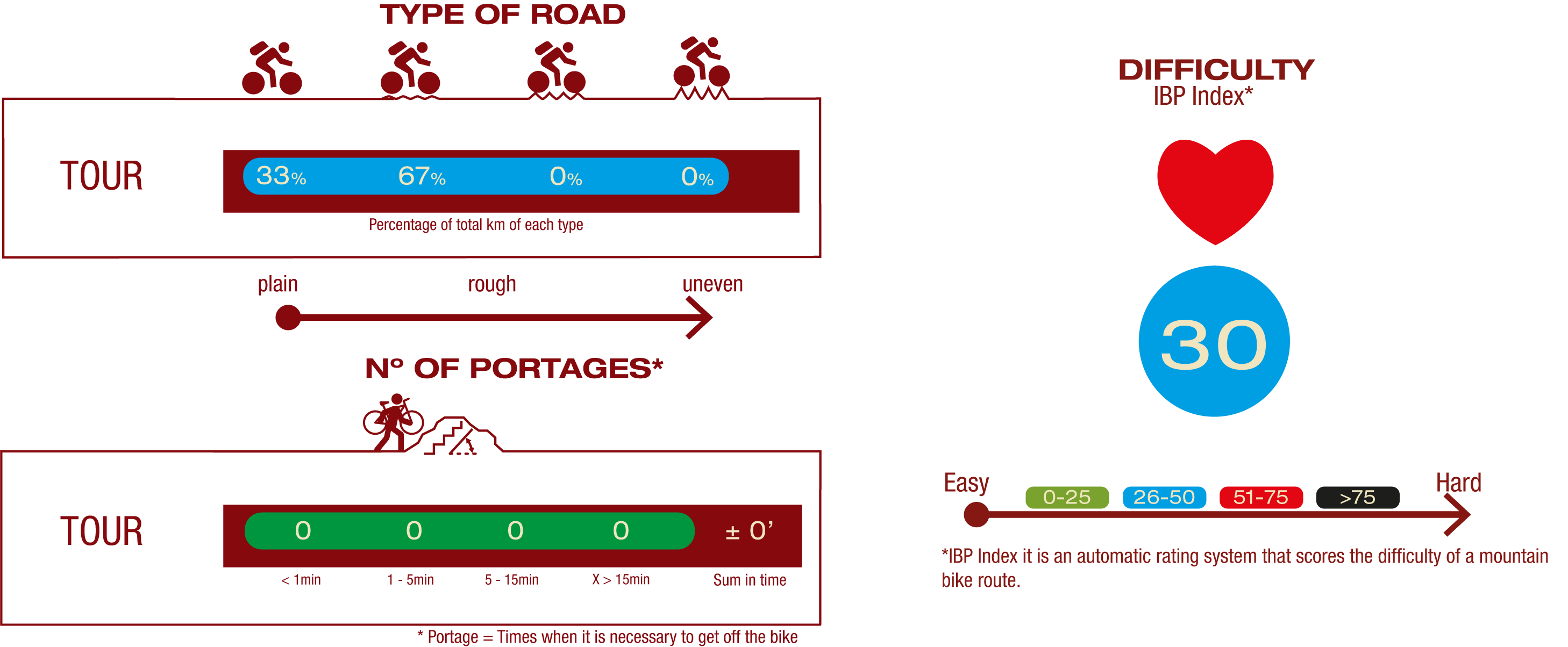Net of Natural
Trails

Stage: Puebla de Valverde - Albentosa
Description
A stage with the aroma and essence of black truffle
Just over 22 kilometres separate the towns of La Puebla de Valverde and Albentosa in Teruel, the start and finish of this charming stage. On this route, a visit to Sarrión, a town with a beautiful and rich architectural heritage, is a must. Among the fields of almond trees (Prunus dulcis) and wild holm oak groves (Quercus ilex) there is land dedicated to the cultivation of a culinary jewel such as the black truffle (Tuber melanosporum), the hallmark of this region and therefore of this stage.

The stage begins next to the old railway station of La Puebla de Valverde, at kilometre marker 83. The old Ojos Negros railway line ran parallel to the railway line currently in use. Holm oak forests alternate with farmland, offering a beautiful chromatic spectacle, with the almond groves standing out when in bloom.
Our route approaches the A-23 motorway, including a small stretch shared with motor traffic, requiring the necessary precautions. Continuing the journey, with the traffic now segregated, we reach the Rambla de Peñaflor viaduct, a spectacular railway construction whose high masonry arches overcome the difference in level of the riverbed, offering a breathtaking view of the landscape.
Once over this viaduct, which will delight cyclists, we reach two old buildings in ruins that once served the mining railway. The route advances through a dense holm oak wood, reaching kilometre marker 86. Just before leaving this Mediterranean forest, a new railway building in ruins reminds us of the route's historic past.

A kilometre further on, we reach a rest area, ideal for taking a quick break. It makes an ideal spot to contemplate the nearby Masía del Fraile farmhouse, surrounded by dense natural vegetation dotted with some farmland. This area boasts some beautiful specimens of Spanish juniper (Juniperus thurifera) that find in these cold lands a perfect habitat.
After passing kilometre marker 88, we can see, on the parallel railway line in use, the Pozo del Fraile station which, although also abandoned, has stood the test of time better than its neighbours on the old mining railway. After a further kilometre, the landscape changes slightly, with holm oak plots of land for the production of the much sought after and high-quality black truffles under the Protected Geographical Indication (PGI) Black Truffle of Teruel.
The kilometres pass by until we reach a railway bridge at kilometre marker 91 at the height of what is known as Masía Tripa Azul. Shortly afterwards, you will reach a new farmhouse where the route turns in an easterly direction, turning back to its predominantly southerly direction shortly afterwards. Crops gradually give way to Mediterranean scrubland. Finally, the journey reaches another rest area where some might like to take a break and enjoy the natural surroundings. This space has a small stone shelter with a single-pitched roof, ideal for sheltering from inclement weather.

The journey continues between old trench areas, built to reduce the gradient that the locomotive had to overcome with the wagons loaded with iron ore. Holm oaks and junipers accompany us until shortly after kilometre marker 96, where the farmland regains its prominence. Just one kilometre away is the old Sarrión railway station, with a rest area ideal for contemplating the beauty of this town in Teruel.
The adventure should not continue without enjoying a visit to this town, home of the Association of Truffle Growers of the Province of Teruel. Here, as well as sampling the gastronomy, we can explore its wealth of architectural heritage, including the Church of San Pedro, the Church of San Cristóbal and the Shrines of La Sangre de Cristo and San Roque.
After crossing the road that leads to the town, the route reaches kilometre marker 98 and continues on a predominant descent to the south. The route then turns to cross the viaduct over the Barranco de los Judíos ravine before continuing through a lit tunnel. After this, there is a short stretch shared with traffic after the 100 kilometre marker, taking all due care.

The journey continues on a relatively flat section, passing the Masía del Retamar farmhouse on the left. After reaching kilometre marker 102, a new farmhouse appears, this time on the right. After another kilometre, with gentle ascending and descending slopes, the Mora de Rubielos railway station can be seen on the left, which belongs to the railway line currently in service.
After another kilometre, we face the final section of this stage full of surprises, starting with a curved tunnel equipped with lighting. All the same, it is recommended to have a torch just in case. Emerging from this tunnel excavated in the natural rock, we come across a small rest area that allows us, offering the chance to rest and a first glimpse of the final surprise of the stage; none other than the grand Albentosa viaduct. This spectacular railway construction is 180 metres long and 40 metres high at its highest point, formed by seven arches that allowed the old mining railway to cross the Albentosa River on its journey from Ojos Negros to Sagunto.
After admiring this majestic feat of railway engineering, it's only a short walk to the town of Albentosa and the end to this spectacular Teruel stage of the Santander-Mediterranean Nature Trail between La Puebla de Valverde and Albentosa.
Managing Entities
Links of Interest
Puntos de interés
Culture
Infrastructure
- Estación de La Puebla de Valverde
- Antigua estación de La Puebla de Valverde
- Túnel
- Viaducto de Albentosa
- Viaducto del Barranco de los Judíos
- Viaducto Rambla de Peñaflor
- Túnel
- Antigua estación de Sarrión
Municipality
Hostel
Vegetation
Passport
Profile

(Calculated according to the MIDE criteria for an average excursionist with a light load)
Multimedia
Downloads
GPS Downloads
Documents
Cyclability
CICLABILITY
This Cyclostage corresponds to stage Teruel - Puebla de Valverde and stage La Puebla de Valverde - Albentosa of the Nature Trail
TYPE OF ROADS, PORTAGES & DIFFICULTY
SAFETY RECOMMENDATIONS
There are several road junctions, a multitude of road junctions, several sections shared with motor vehicles, three tunnels equipped with artificial lighting and one tunnel without lighting.
GENERAL RECOMMENDATIONS
- Find out about the technical aspects of the route and the weather on the day.
- Take care of the environment. Take care not to disturb animals or damage vegetation. Respect private areas.
- You must give priority to pedestrians and comply with general traffic rules.
- The environment in which you will be riding is open, free to move around and an area where many activities are carried out (sporting, forestry, livestock and agricultural activities).
- Always have an understanding, prudent, responsible and respectful attitude.






